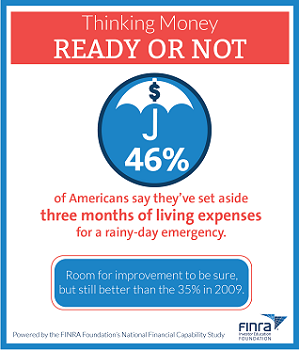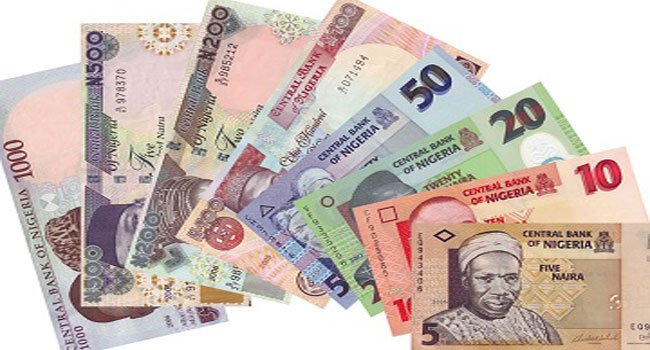Best Practices for Building an Emergency Fund

Anúncios
In today’s unpredictable environment, establishing an emergency fund is increasingly essential. This fund acts as a financial safety net, safeguarding against unforeseen expenses such as medical emergencies, car repairs, or job loss.
A critical consideration is determining the appropriate amount to save and identifying the best location for these funds. This article provides a comprehensive overview of the steps necessary for building and maintaining an effective emergency fund.
It addresses topics ranging from setting savings goals and creating a budget to selecting the most suitable accounts for accessibility and growth. Furthermore, it outlines the appropriate circumstances for utilizing the fund and strategies for ensuring its sustainability over time.
Engaging with this guide will reveal practical strategies that can enable individuals to secure their financial future.
Anúncios
The Importance of an Emergency Fund
An emergency fund is an essential element of personal finance that provides financial security and peace of mind during periods of crisis. This type of savings serves as a financial buffer, helping withdividuals in managing unexpected expenses such as medical emergencies, job loss, or urgent home repairs.
Establishing an emergency fund can greatly enhance financial resilience, facilitating effective risk management and fostering a sense of financial stability. Furthermore, by prioritizing savings in one’s financial planning, individuals not only protect their current financial situation but also advance towards long-term financial objectives, ultimately contributing to financial independence and overall well-being.
Why You Need an Emergency Fund
Establishing an emergency fund is essential for individuals, as it serves as a financial safety net during emergencies and unforeseen life events. The security afforded by such a fund can prevent individuals from incurring debt when confronted with sudden expenses, ensuring they have a financial cushion to rely upon.
For example, unexpected circumstances such as medical emergencies, car repairs, or job loss can arise unexpectedly. Without a designated financial reserve, individuals may feel compelled to rely on high-interest loans or credit cards, which can lead to a detrimental cycle of debt.
An emergency fund not only alleviates stress during challenging times but also promotes financial literacy by fostering proactive budgeting and saving habits. By preparing for the unexpected, individuals can preserve their financial stability, enabling them to address unforeseen challenges without jeopardizing their long-term financial objectives.
How Much Should You Save?
Determining the appropriate amount to save in an emergency fund is a crucial component of financial planning and budgeting, which can vary based on individual circumstances.
While many financial experts recommend saving three to six months’ worth of living expenses, it is essential to tailor savings goals to one’s specific income, expenses, and overarching financial objectives.
Establishing a clear savings rate is vital for effective fund allocation and for ensuring the achievement of financial benchmarks.
Factors to Consider
When determining the appropriate amount to save in an emergency fund, several factors significantly influence financial stability and preparedness for unforeseen circumstances. It is essential to evaluate elements such as monthly expenses, income variability, and the importance of maintaining a certain level of cash flow through a comprehensive risk assessment.
The type of employment plays a critical role in ascertaining the necessity of an emergency fund; individuals in more stable positions may feel comfortable with a smaller safety net. Additionally, income stability, which can vary considerably between freelance work and salaried employment, also determines the ideal amount to save.
Existing debts further complicate this decision, as they may necessitate a higher savings threshold to provide adequate protection against potential income loss. By engaging in meticulous tracking of expenses and planning of income, individuals can make informed decisions tailored to their specific circumstances, ensuring that their emergency funds are both sufficient and sustainable.
Creating a Budget for Your Emergency Fund
Establishing a budget for an emergency fund is crucial for achieving financial objectives and ensuring effective expense management.
By implementing a dedicated savings plan, individuals can systematically allocate a portion of their income to their emergency fund, thereby facilitating the attainment of savings goals while still upholding regular financial obligations.
Identifying Expenses and Setting Goals
Identifying monthly expenses and establishing savings goals are fundamental components of creating an effective budget for an emergency fund. By diligently monitoring spending habits and utilizing budgeting tools, individuals can ascertain the amount required to save each month in order to achieve their desired financial safety net.
To effectively track and categorize expenses, it is advisable to use budgeting software or applications that facilitate the input and categorization of each purchase. Regularly reviewing bank statements and receipts can yield valuable insights into spending patterns, allowing individuals to identify areas where reductions can be made.
Setting realistic savings goals should be grounded in a clear understanding of income and essential expenses, which aids in prioritizing financial objectives. By cultivating sound financial habits, such as routinely reviewing the budget and adjusting goals in accordance with changes in financial circumstances, individuals can build a more secure financial future.
Strategies for Saving
Implementing effective saving strategies is essential for successfully building an emergency fund. By utilizing automated savings, individuals can ensure regular contributions to their fund with minimal effort.
This approach not only reinforces financial discipline but also fosters a proactive savings mindset.
Tips for Building Your Fund
Building an emergency fund is a critical component of enhancing financial stability and preparedness for unforeseen circumstances. By implementing cost-cutting strategies and making informed decisions regarding income allocation, individuals can significantly increase their savings potential.
To initiate this process, it is imperative to evaluate discretionary spending habits, as prioritizing essential needs over non-essential wants can result in substantial savings over time. Additionally, employing cash flow management techniques, such as budgeting applications or spreadsheets, can facilitate closer monitoring of expenditures.
Exploring opportunities for supplemental income, such as freelance work or part-time employment, can further contribute to boosting savings. By directing any additional income towards the emergency fund, individuals can establish a financial cushion that not only safeguards against unexpected expenses but also instills a sense of security throughout their financial journey.
Where to Keep Your Emergency Fund
Selecting an appropriate location for your emergency fund is crucial to ensure both accessibility and potential growth.
Options such as high-yield savings accounts and money market accounts offer a secure environment for your funds while providing competitive interest rates. These financial instruments serve as ideal resources for managing your savings effectively.
Best Options for Accessibility and Growth
When evaluating the optimal options for storing an emergency fund, it is advisable to consider accounts that emphasize both accessibility and growth, such as high-yield savings accounts that offer competitive interest rates conducive to wealth accumulation.
These accounts frequently provide interest rates that can significantly exceed those of traditional savings options, enabling individuals to optimize their funds over time. It is crucial to assess the fees associated with various accounts, as some may impose maintenance charges that could diminish overall savings.
Furthermore, accessibility is a key factor; a user-friendly online platform or mobile banking application can facilitate efficient management of finances and expedite fund transfers when necessary.
By integrating these elements, prudent savers can effectively enhance their financial growth and secure a more stable future.
When to Use Your Emergency Fund
Understanding when to utilize an emergency fund is a vital component of upholding financial discipline and stability. This fund should be predominantly reserved for legitimate financial emergencies, serving as a financial safety net that offers support without jeopardizing long-term financial goals or established spending habits.
Guidelines for Tapping into Your Savings
Establishing clear guidelines for accessing an emergency fund is essential for effective financial management and maintaining financial awareness. Before utilizing savings, it is advisable to implement an emergency budget and explore avenues for expense reduction, ensuring that the fund is preserved for genuine emergencies.
A comprehensive understanding of the distinction between essential and non-essential expenses is critical in this process. Essential expenses, including rent, utilities, and necessary medical bills, should be prioritized when evaluating financial obligations.
Conversely, non-essential expenses, such as dining out or entertainment, can often be significantly reduced during challenging times. Encouraging a proactive approach through regular reviews of one’s financial situation and the identification of potential savings opportunities can greatly enhance the stability of an emergency fund.
This ongoing awareness not only fosters responsible spending habits but also enables individuals to make informed decisions in times of hardship. By prioritizing expenditures, individuals can maintain a robust financial buffer to address unforeseen circumstances.
Maintaining Your Emergency Fund
Maintaining an emergency fund necessitates a consistent savings mentality and financial discipline to ensure its effectiveness over time.
Regular contributions to the fund, along with periodic evaluations of financial preparedness, are crucial practices to preserve the integrity of your savings and ensure they are readily available in the face of adversity.
How to Keep Your Fund Sustainable
To ensure the sustainability of your emergency fund, it is important to develop a comprehensive savings plan that aligns with your financial objectives and includes regular contributions to enhance your financial resilience. Establishing a consistent savings frequency will facilitate the maintenance of a well-funded reserve, prepared for unexpected life events.
It is essential to establish new savings goals each time a withdrawal is made from the emergency fund. This practice not only aids in replenishing the safety net but also promotes a proactive approach to financial planning.
Furthermore, adjusting contributions based on changing life circumstances—such as variations in income or increased expenses—allows for necessary flexibility while ensuring that savings efforts remain effective.
By aligning these savings strategies with broader financial goals, individuals can cultivate a robust safety net that serves as a reliable buffer against unforeseen challenges.
Frequently Asked Questions
What are the best practices for building an emergency fund?
The best practices for building an emergency fund include setting a realistic savings goal, creating a budget, automating your savings, prioritizing your expenses, and avoiding unnecessary spending.
Why is it important to have an emergency fund?
Having an emergency fund is important because unexpected expenses can arise at any time, such as car repairs or medical bills. It helps to avoid going into debt or having to rely on credit cards in the event of an emergency.
How much should I save in my emergency fund?
Financial experts recommend having at least 3-6 months’ worth of living expenses saved in your emergency fund. However, the amount may vary depending on your individual expenses and financial situation.
Should I use my emergency fund for non-emergencies?
No, your emergency fund should only be used for unexpected and necessary expenses. It is important to have a separate savings account for other financial goals.
What should I do if my emergency fund is not enough to cover an expense?
If your emergency fund is not enough to cover a large expense, consider using other resources such as a low-interest personal loan or negotiating a payment plan with the service provider. It is also important to continue saving and replenishing your emergency fund.
Can I invest my emergency fund for better returns?
No, your emergency fund should be easily accessible and not subject to market fluctuations. It is recommended to keep it in a high-yield savings account or a money market account for easy withdrawal in case of an emergency.


